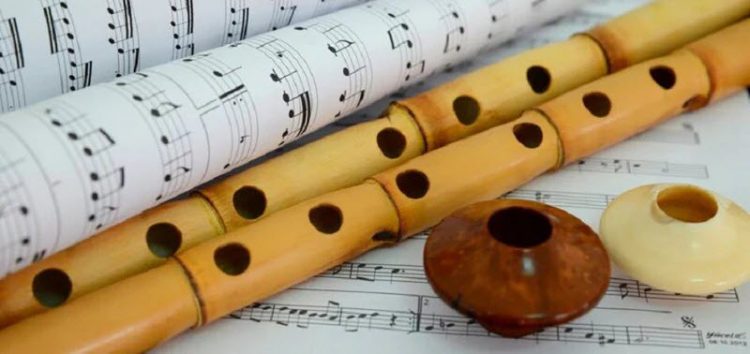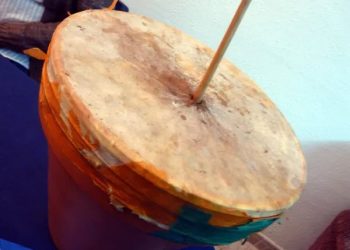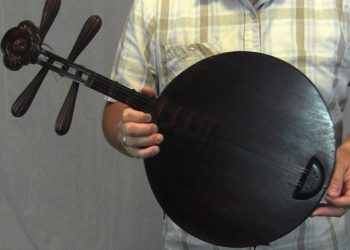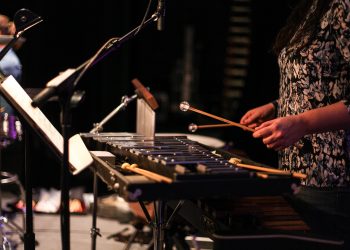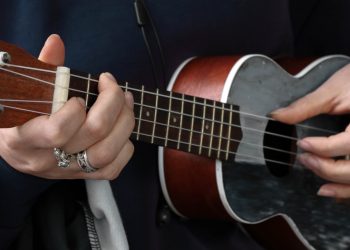Music is a universal language that connects people from all corners of the world. There are countless musical instruments that exist, each with their unique sound and history. In this article, we’ll explore the top 15 musical instruments that start with the letter N. From well-known instruments like the piano to obscure instruments like the nyckelharpa, this list covers a wide range of instruments that have contributed to the rich tapestry of music across various cultures and genres.
We’ll delve into the origins of each instrument and explore its unique features, playing techniques, and notable musicians who have mastered them. Whether you’re a musician looking to expand your repertoire or a music enthusiast interested in learning about different instruments, this list has something for everyone.
In addition to learning about the instruments themselves, we’ll also touch on the cultural and historical significance of each instrument. Music has been an integral part of human expression for thousands of years, and each instrument has its own story to tell. By the end of this article, you’ll have a newfound appreciation for the diversity and beauty of musical instruments that start with the letter N.
1. Nadaswaram
The nadaswaram is an ancient instrument from India, often referred to as a double reed wind instrument. It’s made of two parts: the mouthpiece and the main body. The musician blows air through the mouthpiece into the tube in order to produce sound.
Depending on where it comes from, this instrument can have various names such as nagaswaram, nadhaswara, dolu or shehnai. Traditionally they are used during special occasions like weddings and festivals. They come in different sizes too; larger ones having a deeper tone while smaller ones create higher notes.
Playing the nadaswaram requires great skill and practice since one needs to master how to control breath when blowing across its reeds. As such, musicians must be trained by experts for several years before being able to perfom with the instrument properly. Additionally, some techniques include playing specific patterns called kritis which require precision and complex finger movements along all three octaves of the scale.
This extraordinary musical experience has been passed down through generations over centuries and continues to captivate audiences today due its majestic sounds and emotional appeal.
2. Nagado–Daiko
Continuing on from the nadaswaram, another traditional instrument found in India is the nagado-daiko. This percussion instrument consists of a barrel drum – usually made out of wood and covered with animal skin – attached to two sticks or handles. The player holds one stick in each hand and strikes the drumhead alternately, resulting in an impressive rhythm.
The sound produced by this instrument has been likened to thunder, as it can produce loud rumbling sounds that travel far distances. It’s often used during religious ceremonies or festivals, particularly those associated with Shintoism in Japan and Hinduism in South Asia. Additionally, it has become increasingly popular over time due to its use in modern music genres such as taiko-ensembles or Kodo performances.
Playing the nagado-daiko requires a certain sense of timing and coordination; something which takes practice to master. Moreover, different techniques have developed for playing this instrument including solo pieces where more intricate patterns are played, ensemble pieces where several drums are used at once for bigger effects, and also duets between players who play off each other musically.
No matter how it’s performed however, hearing this powerful musical creation never fails to leave audiences captivated by its unique resonance and energizing rhythms.
3. Nagara
Moving on from the nagado-daiko, another traditional instrument found in India is the nagara. This cylindrical drum has a wooden shell and is covered with animal skin at both ends. It comes in various sizes; ranging from small hand drums to large ones that are mounted on stands.
The sound of this percussion instrument can be described as deep, resonant and haunting – creating an atmosphere which is often used for devotional or spiritual purposes. Additionally, it’s become increasingly popular due to its use in modern music genres such as fusion or worldbeat music.
Playing the nagara requires skill and technique; something which takes practice to develop. There are numerous variations available when performing with one of these drums including solo pieces where intricate patterns are played, ensemble pieces where several drums are used at once for bigger effects, and duets between players who perform off each other musically.
No matter how it’s performed though, the unique resonance created by a single nagara never fails to captivate listeners within its mesmerizing rhythms.
4. Nai
Taking a step away from percussion instruments, another traditional instrument found in India is the nai. This flute-like instrument has been used for centuries and resembles a vertical pipe with six fingerholes along its length. It’s made of bamboo or metal and produces a mellow sound that can be heard over large distances.
The nai is unique to Indian music as it requires special techniques when playing such as bending notes, vibrato, pitch control, and more. These nuances allow the musician to create their own expression through the instrument – something which adds an extra layer of beauty to any performance.
As far as musical genres go, this flute-like instrument works best with classical music but also lends itself well to folk songs and devotional melodies too. The same goes for accompaniment; while it sounds great on its own, adding additional instrumental layers creates even richer tones that will keep audiences enthralled throughout every note played.
No matter what style, setting or context it’s used in though, the sweet tones of the nai have remained constant for generations – continuing to captivate listeners around the world today.
5. Nail Violin
A less well-known instrument found in Indian music is the nail violin. This stringed instrument originated in South India and has a unique design compared to other violins due to its use of nails instead of strings. The tone produced by this instrument varies depending on how hard the player hits the nail with their bow, giving it more flexibility than a traditional violin.
The technique used to play the nail violin also differs from that of a regular violin; while gliding techniques are still present, they can be combined with plucking or tapping motions for added depth and texture. As such, it’s often heard as part of an ensemble rather than being played solo – adding color and flair to any performance.
In recent years, some artists have begun to explore playing the nail violin outside of its traditional roots – combining it with genres like jazz and rock for an interesting fusion sound. While challenging at first, these new approaches have allowed musicians to create something entirely new and exciting – pushing boundaries both musically and culturally.
This unusual yet enchanting musical tool continues to evolve each day as more talented players bring their own unique ideas into the mix. With so many possibilities now available, the future looks bright for this versatile instrument!
6. Native American Flute
Building on the exploration of wind instruments, let’s now take a look at one native to North America: the Native American flute. This instrument is believed to be thousands of years old, and it has played an important role in many tribes’ cultural practices throughout history. Its distinctive sound – created by blowing into a single side-blown pipe while simultaneously lifting or lowering fingers over the holes – makes this a truly unique choice for any musician looking to explore new sounds.
Modern versions have plenty going for them too; they are often inexpensive compared to other woodwinds, come in a variety of sizes and shapes, and offer endless opportunities for creative expression as each player can work out their own individual style when playing. Additionally, its simple design also means that even those with little prior experience should find learning how to play relatively straightforward!
The Native American flute is becoming increasingly popular amongst all kinds of musicians these days; from folk performers who want to pay homage to traditional music styles, through to jazz players seeking something different from their usual repertoire. It’s certainly no wonder why so many people love this instrument – not only does it provide hours of fun but it also helps bridge cultures together in beautiful ways.
This versatile piece of musical equipment could prove invaluable if you’re looking for something special – whether you plan on using it live or recording your songs. Who knows what kind of amazing results will ensue?
7. Natural Trumpet
Building on the exploration of wind instruments, let’s move onto another popular choice: the natural trumpet. This centuries-old instrument is known for its distinctive sound, and has been used in many different musical genres throughout history – from classical music to military bands. Its rich tone comes from the metal tube it is made out of, along with the bell at one end which helps project those glorious notes further than most other brass instruments can manage!
What makes this type of trumpet so appealing is that despite having a fairly basic design, it still offers considerable flexibility when playing; thanks to its adjustable valves, players can easily create their own signature sound by altering pitch or timbre. Plus, since modern-day trumpets are typically crafted from lightweight materials such as copper or aluminum alloys, they tend to be easier to carry around too.
Whether you’re an experienced player looking for something new or just starting out on your journey into the world of music-making – there’s no doubt about it that the natural trumpet could be a great option. Even though mastering it may take some time and effort (as any good thing does!), you’ll soon discover how rewarding and exciting it can be once you get going.
With all these benefits combined, why not give this timeless instrument a try? Who knows what kind of wonderful sounds will come forth?
8. Nay
The nay is an ancient double-reed woodwind instrument that has been used in many cultures around the world. It’s a versatile and expressive tool, with its sound ranging from soft and mellow to loud and piercing depending on how it’s played. The length of the reed allows for a greater range of pitches than most other instruments – which makes this particular type of flute ideal for creating melodies.
In terms of playing style, there are several different methods available; such as blowing into two reeds at once or using circular breathing techniques. Of course, learning how to play the nay takes some practice but it can be incredibly rewarding when you finally get the hang of it! Plus, since these instruments come in various sizes – making them suitable for both adults and children alike – they can make great starter instruments too.
What sets this instrument apart from others is its unique tonal quality. Its warm timbre gives it a special charm that many people find appealing, while its ability to blend into a variety of musical settings means that no matter what genre you’re playing – you’ll always have something interesting to add. And if improvisation is your thing, then look no further than the nay! Thanks to its wide range of notes you can easily express yourself without having to worry about hitting any wrong notes; giving you plenty of room to explore whatever creativity comes your way.
So why not give this beautiful instrument a go? With all these benefits combined, there’s no doubt that the nay could open up new possibilities for music exploration and expression like never before!
9. Ngoni
Continuing on from the nentsi, another traditional African instrument to consider is the ngoni. This stringed lute-like instrument has been played in many parts of Africa for centuries, and it’s one that offers a unique blend of melancholic melodies with upbeat rhythms.
The ngoni consists of four strings which are attached to a wooden body. It can be either held between your legs or placed on top of a table while playing. The sound is created by plucking the strings with both hands; often resulting in complex polyrhythms as well as captivating harmonies.
What makes this instrument so special is its ability to evoke emotion through its haunting tones – something that few other instruments can do quite like the ngoni does! Additionally, since each string can produce three different notes at once due to its tuning capabilities, you’ll have plenty of sonic options when jamming out with friends or composing new music pieces.
One final benefit worth mentioning is how affordable it is compared to other musical instruments – not only making it perfect for those just starting out but also great for professional musicians who want an exciting live performance experience without breaking their bank balance.
10. Nine-String Guitar
Continuing on from the ngoni, another African instrument worth exploring is the nine-string guitar. This traditional fretless acoustic guitar traces its roots back to West Africa and has become popular in many countries due to its versatility and ease of use.
The nine-string guitar’s sound can be likened to a combination of an electric bass with a mandolin; it offers low tones as well as bright timbres that will captivate your audience. Its unique construction also gives you access to alternate tunings and voicings which can help create exciting layers of melody in any live performance or recording session.
What sets this instrument apart from other guitars are its two extra strings – one at the top and one at the bottom – which add new harmonic possibilities to your playing. Furthermore, since there are no frets, you’ll have more freedom when creating melodies as you won’t get stuck between notes like on a conventional guitar.
Overall, this makes for an incredibly enjoyable experience whenever you pick up the instrument – whether it’s for practice sessions or big performances! With enough time and dedication, mastering this versatile stringed wonder could prove to be both rewarding and lots of fun!
11. Njarka
Another African instrument that is starting to get more attention in recent years is the njarka. This ancient one-stringed fiddle originates from Burkina Faso and has become widely popular due to its unique sound and adaptability.
The njarka’s single string gives it a distinct tone, creating haunting melodies with each stroke of the bow – making it perfect for solo performances or accompanying traditional singing. It also offers a wide range of tunings so you can easily create complex rhythms or different timbres depending on your preferences.
What sets this instrument apart from other stringed instruments are its small size and ease of use – allowing you to quickly pick up the basics and begin improving your technique right away! Furthermore, since there are no frets, you’ll have complete control over pitch when playing which makes it easier to improvise melodic lines as well as explore unusual tonalities.
In short, the njarka is an incredibly rewarding experience both visually and sonically; it’s sure to bring out your creative side while filling any room with its enchanting sounds! Whether you’re just getting started or looking for something new to add to your collection, this versatile little wonder should definitely be at the top of your list!
12. Northumbrian Small Pipes
The Northumbrian smallpipes are a unique set of bagpipes from the historic county of Northumberland in England. These pipes feature a smaller chanter and drone than other types, allowing them to produce a sweet, mellow sound that’s perfect for traditional folk music. They’re also incredibly easy to learn, so even novice players can be playing tunes in no time!
These instruments have been around since the 17th century, but they’ve recently seen an increase in popularity thanks to their distinctive tone. The rich timbre makes them ideal for performing solo or as part of a larger ensemble – adding just the right amount of atmosphere to any gathering. The flexibility of these pipes also means they can be used in all sorts of musical genres from classical to jazz and beyond.
For those looking for something truly special, custom-made Northumbrian smallpipes offer endless possibilities when it comes to style and design. Craftsmen often put extra care into creating intricate decorations on each instrument – making them one-of-a-kind pieces. Not only do these pipers look beautiful, but they often provide improved playability over off-the-shelf models too!
No matter what kind of music you want to explore, having your own set of Northumbrian smallpipes is sure to take your creative journey to new heights. With the right combination of skill and dedication, anyone can discover their own unique voice with this captivating instrument.
13. Nose Flute
From the sweet sound of Northumbrian smallpipes to another instrument with a rich cultural history, let’s now turn our attention to the nose flute. This ancient instrument has been used around the world for centuries and its distinctive nasal tone is instantly recognizable. Whether you’re looking for a unique solo experience or an interesting addition to your ensemble, it’s definitely worth exploring!
Unlike other wind instruments, playing the nose flute requires no special embouchure technique – just put it between your lips and blow gently into one nostril while blocking off the other. The result? A beautiful, ethereal sound that varies depending on which notes are being played. What’s more, these instruments come in all shapes and sizes so they can be tailored to any skill level or style of music.
One advantage of the nose flute over traditional woodwinds is its portability – because they’re not made from fragile materials like brass or wood, they can easily be taken on long trips without taking up too much space in your bag. And if you ever find yourself stuck somewhere without access to electricity or amplifiers, don’t worry; this little gem will still provide plenty of entertainment as long as you have breath in your lungs!
No matter what kind of musician you are – beginner or professional – adding a nose flute to your repertoire could open up whole new worlds of possibilities for creative expression. With enough practice and experimentation, even novice players can soon start producing hauntingly beautiful melodies with this captivating instrument.
14. Nyckelharpa
Having explored the distinct sound of nose flutes, let’s now turn our attention to another traditional instrument with a rich cultural history: the nyckelharpa. This unusual bowed-stringed instrument has been played for centuries in Scandinavian countries and its captivating tones are sure to add an intriguing new layer to any ensemble.
Although it looks intimidating at first glance, getting started on the nyckelharpa is surprisingly easy – all you need is some basic knowledge of how strings work and a good ear! The instrument itself consists of two sections – one containing a series of keys that press down strings when held down by your fingers, while the other contains four or five sympathetic strings which resonate in sympathy with whichever string is being bowed. By combining both sets of strings together, musicians can create truly unique sounds that range from delicate melodies to powerful chords.
In addition to producing beautiful music, playing the nyckelharpa also offers plenty of physical benefits too. As well as strengthening fine motor skills, bowing exercises help improve posture and dexterity – making this instrument perfect for those looking to build strength and coordination while learning something new.
So if you’re searching for a challenging yet rewarding musical experience, why not give the nyckelharpa a try? With enough practice and dedication, even beginners can soon start exploring the full potential of this fascinating instrument – creating heartfelt melodies that will transport listeners far beyond their everyday lives.
15. Nylon Guitar
In contrast to the nyckelharpa’s strings of steel, nylon guitar strings offer a softer sound with a more mellow tone. This type of string has become increasingly popular in recent years due to its versatility and ease of playability. Whether you’re after dreamy acoustic tones or powerful electric riffs, nylon guitars are an excellent choice for those looking to make their music stand out from the crowd.
When deciding which kind of guitar strings are best for you, it’s important to take into account not only your playing style but also the overall feel and look of the instrument itself. Nylon strings come in different thicknesses and tensions – allowing players to achieve anything from rounder bass notes to brighter treble sounds. What’s more, they tend to be easier on your fingers than metal-based strings, making them ideal for beginners who need less resistance when pressing down chords.
Playing a nylon guitar can add texture and depth to any musical arrangement – whether solo or accompanied by other instruments. Its unique timbre is perfect for creating complex rhythms as well as gentle melodies that will linger long after each performance ends.
With all these amazing features, it’s no wonder why so many musicians choose nylon guitars over traditional models; they provide an incredibly rewarding experience which brings out the very best in each player’s creativity. So if you’re aiming for something truly special in terms of sound and feel, then this could be just what you need!
